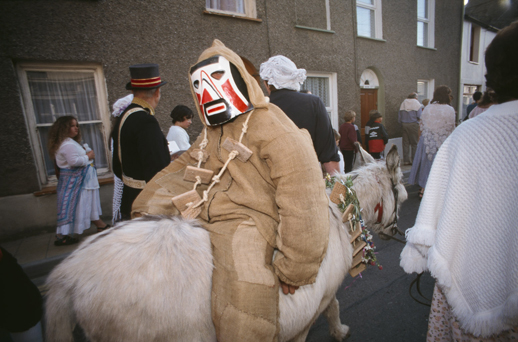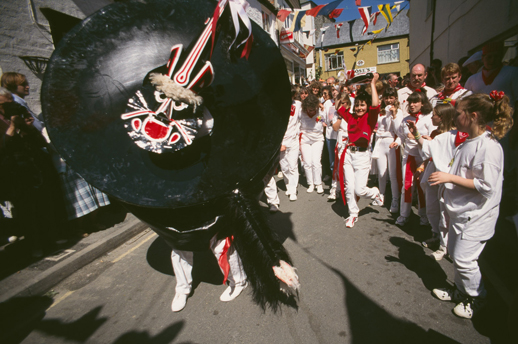
The Doc Rowe Archive: 50 Years Focusing on Folk’ at the Museum of East Anglian Life.
Ruth Richardson writes:
The poet Edna St Vincent Millay once described memory as the seventh colour of the spectrum.
Archives are vital repositories of collective memory, and all who use them – custodians and visitors alike – share an understanding of the importance of cherishing that extra-spectral-colour.
Britain is rich in its public archives and records. The nation as a whole, and every region has its archive and its archivists who care for them. Most institutions keep administrative materials, and many firms, estates, families, and individuals, preserve some kind of private archive. These special collections of human material record details of lives and of places, they conserve facts of creation: relationships, obligations, deeds, hopes, fears, events, kindnesses and cruelties, preserving them so that future generations may understand.

Archives are invariably thought of as paper collections – documents of all kinds – but they can include images, occasionally objects. Increasingly these materials are emerging on the ether, but vast quantities of them nevertheless remain locked away out of the light, in boxes and rolls, temperature-controlled in institutions, or folded in domesticity at the back of cupboards, in attics, under beds. They lie humming and glowing with life in quiet rooms, dark places, and still.
Ordinary life invariably passes between doing and recording. Sometimes missed from such collected materials is the practical doing of life: the practice of living, of making, of being, its ways, skills, turns of mind, its quirks and subtleties, its sounds and moves, its particularities, its repetitions, habits, its inching changes and accommodations.
Paper can only go so far, often recording only limited moments of lengthy lives, capturing only aspects, angles, routine events – like hatchings, matchings, & dispatchings – or startling ones: crimes, disasters, special occasions. Often what is kept survives because it carries a point of view, or was collected for specific reason: it carries an agenda. And too often, the cycles of indigenous life have gone unnoticed, unrecorded, unremarked, unvalued.
To try to get a feel for the real nature of life as it has been lived in these islands, in its sheer ordinariness, its interest and variety, historians have painstakingly to reassemble partial glimpses of what really passed from surviving fragments, silences, the peripheral detail in the photograph, the unspoken social gathering behind the browning signatures on a document, the hands that sewed, that cut the lock of hair, that reared the child, the personalities that organised, that ruled, that performed, that laughed, that agreed, that made.
As a historian, I have often experienced that moment when a long search is concluded in a find, and am well aware too, that so very often a find leads to yet further puzzles. Perhaps even more often, the records one hoped for cannot be found: they have not been catalogued, not donated, are secret, secreted, hidden, lost. Frequently, despite long searches, one has to recognise that there is nothing: that such records as there are must be taken to stand for a myriad others, unknown. Inconvenient records have not been kept, let go, destroyed; a new generation had not seen their significance, dismissed them as unimportant, failed to cherish what they should have saved. Vigilance for the memory of the future was somehow lacking.
I often think that archive dust – the dust on one’s hands or that is deposited in small particulate sprinklings on one’s desk or clothes, most noticeable usually after one rises to leave the archive – represents the many lives that go unrecorded.
Doc Rowe’s life’s work goes unmentioned here, but resonates in every word.
The exhibition has been curated by the Museum of British Folklore and runs from 18th April – 30th June at the Museum of East Anglian Life, Stowmarket, Suffolk.